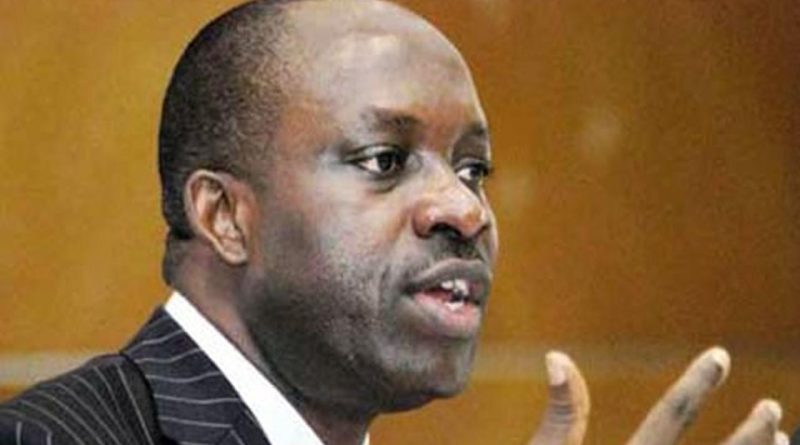Anambra’s fiscal paradox: When a top-ranking state falls short
Soludo advocates harmonised national public sector intervention in addressing health concerns
When the BudgIT State of States Report 2025 ranked Anambra as Nigeria’s best-performing state in fiscal management, it appeared to affirm the state’s reputation for prudence and ambition. From second place in 2024 to first in 2025, Anambra’s rise was powered by a striking statistic: 75.32 percent of its total expenditure was committed to capital projects, the highest in the federation.
Governor Charles Soludo’s administration hailed the report as a validation of its fiscal discipline and developmental vision. But behind the applause lies a paradox, a fiscal profile that looks impeccable on paper yet struggles to translate into real improvements in the lives of ordinary Anambra residents.
Read also: Anambra, Lagos, Kwara top five best-performing states in Nigeria – BudgiT
When allocation doesn’t mean delivery
Anambra’s 2024 budget tells a story of impressive ambition and poor execution. Out of N218.26 billion allocated for capital expenditure, disbursement data reveals huge shortfalls in key sectors that matter most to citizens.
Education, the bedrock of human capital development, saw only 34.69 percent of its allocation actually spent. The health sector did slightly better, at 62.5 percent utilisation. The most alarming figures came from social welfare (3.1 percent) and land development (17.4 percent).
Indeed, while the state earned praise for prioritising infrastructure, the low implementation rates across critical sectors paint a picture of a system efficient at planning but weak in execution.
“Ordinary people measure success by whether life is getting easier,” a policy analyst noted. “If rural roads remain impassable and teachers are owed allowances, then fiscal excellence has limited meaning.”
Debt risk multiplier: The foreign exchange time bomb
Anambra’s fiscal strength is overshadowed by a debt structure heavily skewed toward foreign borrowing. Of its N187.88 billion total debt stock, 84.73 percent is denominated in foreign currency, a risky position in a period of intense naira volatility.
Between 2015 and 2024, Anambra’s total debt ballooned by an astonishing 1,129 percent. With the naira’s depreciation from N800/$1 in 2023 to N1,500/$1 in 2024, the state’s repayment obligations surged.
Patrick Chimezie, an economist, believes this debt growth is tied to the governor’s expansionary budgetary approach aimed at rapid infrastructure development.
“Anambra is a developing state, so there is a need to grow roads and institutional structures,” he said. “Borrowing is not the problem, the questions are: what are we borrowing for, and what is the repayment plan? Without clear answers, the debt size will continue to pile up.”
Read also: Anambra tops 2025 State of States fiscal performance rankings
FAAC dependency: The fragile foundation beneath fiscal glory
For a state famed for its entrepreneurial energy, Anambra’s fiscal dependency on Abuja remains troubling. Despite moderate growth in Internally Generated Revenue (IGR), up 18.7 percent year-on-year, FAAC allocations contributed 87.79 percent of the state’s total recurrent revenue in 2024.
This dependency underscores a deeper structural weakness: local economic productivity remains too shallow to sustain the state’s growing ambitions.
BudgIT’s State of States Report 2025 supports this concern, noting that across Nigeria, 21 states have relied on FAAC for at least 70 percent of their total revenue. For Anambra, that dependency ratio is one of the highest among the top five performing states.
“It’s worrisome that Anambra depends more on FAAC than on IGR,” Chimezie added. “Yet citizens complain of multiple taxation. Traders are overburdened by levies even as allocations from the federal government have more than doubled. There are too many revenue-collecting agencies, and it’s unclear if all the money reaches the government’s coffers.”
Fiscal brilliance or paper stability?
Experts believe Anambra’s top ranking in the 2025 fiscal index, which aggregates metrics such as debt sustainability, revenue performance, and capital prioritisation, reflects statistical strength, not necessarily citizen welfare.
They cautioned that ‘fiscal success,’ driven by external inflows and one-off revenues, may prove unsustainable.
“The paradox here lies in the disconnect between fiscal prioritisation and real development impact,” said Kingsley Enwelim Nwanze, director-general of the Centre for Leadership and Creative Entrepreneurs in Africa (CELCE-Africa).
“Despite the impressive capital allocation, implementation rates in education, healthcare, and job creation remain worryingly low. When external inflows drive fiscal performance rather than internally generated productivity, sustainability becomes uncertain.”
Nwanze argued that true fiscal success should be measured by improved welfare outcomes, reduced poverty, better schools and hospitals, as well as thriving local enterprises.
“Without inclusive implementation frameworks and strong monitoring systems, high capital allocations may only beautify reports while citizens continue to struggle,” he said
A cautionary triumph
The numbers are clear: Anambra’s fiscal reforms are real, but their social dividends remain uncertain. With 75 percent of its spending classified as capital investment, the state stands as a model for ambition, yet it struggles with weak project execution, unsustainable debt exposure, and heavy reliance on federal transfers.
For residents, the lived reality is that roads are still riddled with potholes, public hospitals lack equipment, and education infrastructure continues to deteriorate despite billions on paper.
As Anambra celebrates its fiscal crown, the real question remains: can the state convert its paper prosperity into people-centered progress? Or will it remain Nigeria’s most fiscally sound paradox?

